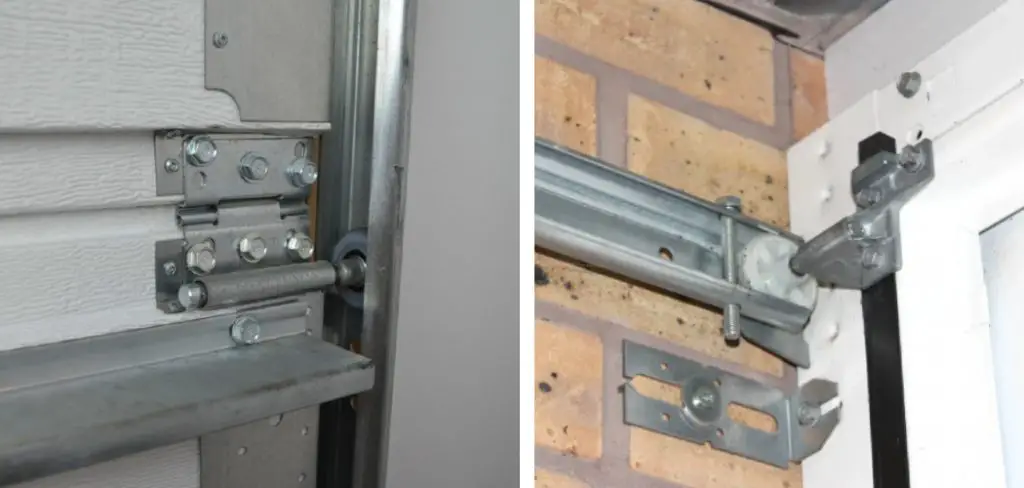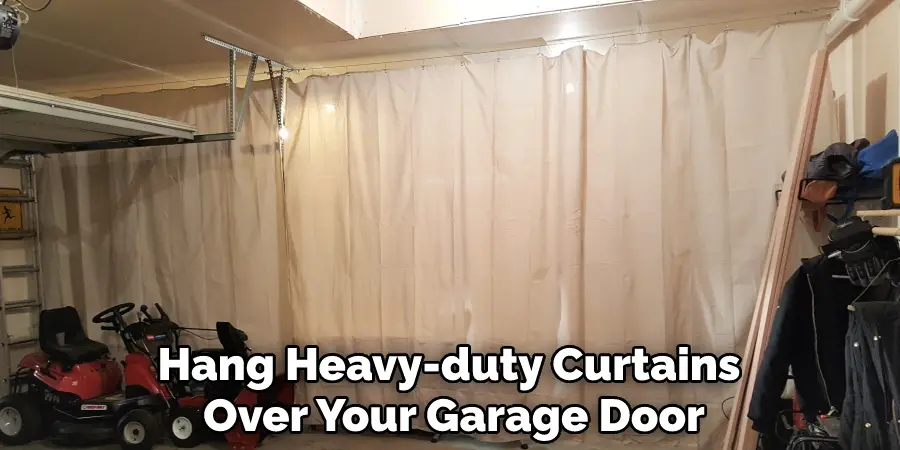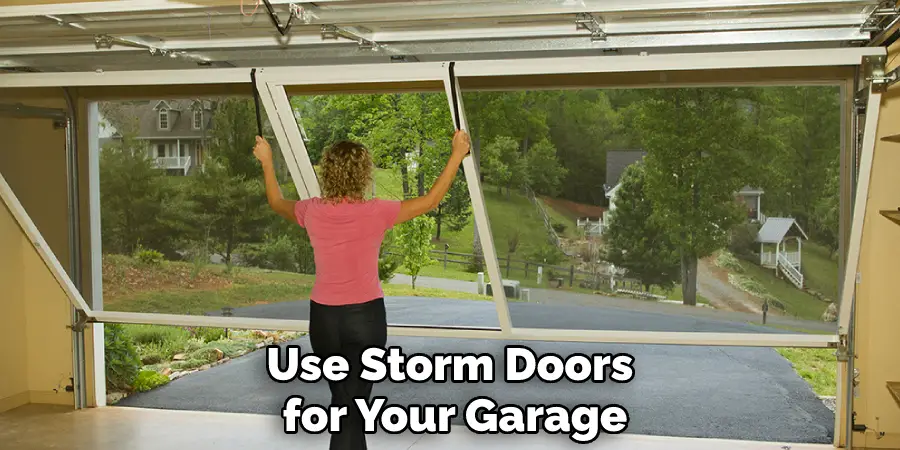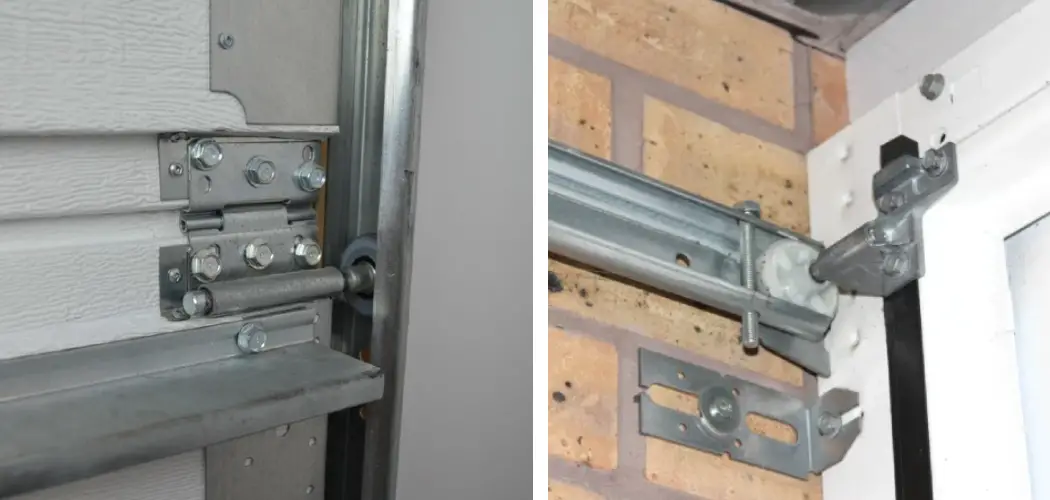When the cold winter weather is closing in, it’s important to ensure that your doors and windows are properly sealed to help keep out drafts. Although most homeowners focus on their home’s entryways for insulation, a garage door can be one of the biggest culprits when it comes to energy loss.

From ensuring all of your weather-stripping’s are tightly fitted against the frame and adding extra layers of protection to covering up cracks, you’ll need to follow how to seal a garage door for winter. Fortunately, sealing a garage door for winter doesn’t have to be difficult – we’ll show you how!
Summary: Garage door sealing for winter is a necessary precaution to prevent cold air from entering the garage and damaging your car, tools, and equipment stored within. Sealing your garage door should be done before the colder months arrive and can help protect against drafts, moisture, ice, dust, dirt, and pests. To seal a garage door for winter correctly, you must ensure all the wires around it are properly hidden.
What Is the Best Material for a Garage Door Seal?
When it comes to sealing your garage door for winter, the best material to use is weather stripping. Weather-stripping is made of flexible materials that are designed to provide a barrier between two surfaces, which prevents air and moisture from entering your garage.
This can help reduce energy costs in cold climates as well as protect your vehicle and belongings during the colder months. Weather-stripping typically comes in either vinyl or foam and can be purchased from most local hardware stores. Vinyl weather stripping is usually more dura months but is more expensive than foam.
Foam weather-stripping is generally cheaper but may not last as long as vinyl in extreme weather conditions. To install weather-stripping, start by measuring the area of your garage door and then cut the weather-stripping to size. Then peel off the backing and adhere the weather-stripping to your garage door.
Finally, use painter’s tape to seal the edges of the weather-stripping for a secure fit. Once the weather-stripping is installed, you can then add a sealant to the surface of your garage door to help keep air and moisture out. There are several types of sealants available, but the most popular options for garage door sealing include silicone-based caulk and rubber sealant.

Both types of sealants are easy to apply and provide a secure barrier against moisture and air. By following these steps, you can ensure that your garage door is properly sealed for winter and protected from winter weather conditions such as snow, sleet, and cold temperatures.
Having an effective seal on your garage door can also help to reduce energy costs and keep your belongings safe. Taking the time to properly seal your garage door will end up saving you money in the long run.
You Can Check It Out to Reconnect Garage Door Trolley
9 Methods on How to Seal a Garage Door for Winter
1. Check the Door for Cracks and Gaps.
Before you do anything, you need to check the door for cracks and gaps. These can let in cold air and make your garage much less comfortable. You can use a flashlight to help you find any cracks or gaps. Once you’ve found them, use caulk or weather-stripping to seal them up. If you find any bigger gaps, you might need to replace the weather-stripping or even the door itself.
2. Install a Door Sweep.
A door sweep is a strip of material that you attach to the bottom of your door. This will help to seal off any space between the bottom of the door and the threshold. Door sweeps are relatively inexpensive and easy to install, so they’re a great option for anyone looking to seal their garage door for winter.
After installing the door sweep, it’s important to test it to make sure there are no gaps or leaks.
3. Apply Foam Tape to the Door.
Foam tape is another great option for sealing up your garage door for winter. It’s easy to apply and can be found at most hardware stores. Simply cut strips of foam tape to fit along the top and sides of your door, then press them into place. The foam tape will create a strong seal against air and moisture, keeping your garage warm and dry.

Make sure to press firmly along the edges for the best seal. You may need to use multiple strips of foam depending on the size of your garage door. Once you’re finished, clean up any excess tape with a damp cloth. With foam tape, your garage door will be well-protected from cold winter winds and moisture.
4. Hang Heavy-Duty Curtains over the Door.
If you want a more permanent solution, you could hang heavy-duty curtains over your garage door. This will completely block out any light or drafts coming through the door. Curtains are also relatively inexpensive and easy to find, so they’re a great option for anyone looking to seal their garage door for winter.
To hang the curtains, simply measure the height and width of your garage door, then cut a piece of fabric to those exact dimensions. Attach small curtain rings to the top of the fabric, then hang them onto a curtain rod. Make sure there’s adequate tension and weight on the bottom of the fabric so that it is taut and hangs straight.
5. Install a Storm Door.
Storm doors are designed to provide an extra layer of protection from the elements, so they’re perfect for sealing off your garage during winter. Storm doors are available in a variety of styles and can be found at most home improvement stores. To install, first measure and cut the door frame to fit your garage opening.
Then attach hinges on the frame and mount it into place. Finally, attach the door itself to the frame and latch it shut. Storm doors are an easy, effective way to protect your garage from winter weather.
6. Cover the Door with Plastic Sheeting.
If you want a quick and easy way to seal your garage door for winter, you could cover it with plastic sheeting. This will create an airtight seal that will keep out drafts and cold air. Simply staple the sheeting in place or use heavy-duty tape to keep it secure. Make sure that you don’t leave any gaps or holes in the plastic sheeting, or else cold air will still get inside.

You can also use a combination of plastic sheeting and weather stripping to get an even better seal. You may want to consider using insulated sheeting if you live in a climate that experiences extremely cold temperatures. This will help to provide an extra layer of protection and insulation around your garage door.
7. Use Weather-stripping.
Weather-stripping is a great way to seal up any cracks or gaps in your garage door. It’s available in both foam and vinyl and can be found at most hardware stores. Start by measuring the area of your garage door, then cut the weather-stripping to size.
Then peel off the backing and adhere the weather-stripping to your garage door. Finally, use painter’s tape to seal the edges of the weather-stripping for a secure fit. Although weather-stripping is not a permanent solution, it’s an easy and inexpensive way to protect your garage door during the winter months.
8. Apply a Sealant to the Door.
Once the weather-stripping is installed, you can then add a sealant to the surface of your garage door to help keep air and moisture out. There are several types of sealants available, but the most popular options for garage door sealing include silicone-based caulk and rubber sealant.
Both types of sealants are easy to apply and provide a secure barrier against moisture and air. When applying the sealant, start from one corner and follow the frame around in a circular motion. Make sure to fill any gaps or cracks thoroughly.
9. Hang Insulated Blankets Over the Door.
If you’re looking for an even more effective way to seal your garage door, you can also hang insulated blankets over it. These blankets will help to keep out drafts and cold air while also providing extra insulation. To hang the insulated blankets, you can use binder clips or heavy-duty tape. Make sure you securely attach them to the door, so they don’t blow away if there is a strong wind.

It’s important to remember that insulated blankets or curtains may reduce the effectiveness of the garage door opener if you’re using one. A better option may be to hang them over the top of the door instead of the sides, so you can still use the opener.
Conclusion
Sealing your garage door is a simple way to prevent cold air from entering your home and raising your energy bills. By taking the time to do this small task, you can keep your family warm all winter long.
Follow these steps, and you’ll be sure to have a well-sealed garage door that will help reduce drafts in your home. By following these steps on how to seal a garage door for winter, you can seal your garage door properly and prevent any cold air from coming in. If you need any more help, please feel free to contact us, and we will be happy to assist you.
You Can Check It Out to Fix Bent Garage Door Panel
I am Rick. I grew up helping my dad with his handyman service. I learned a lot from him about how to fix things, and also about how to work hard and take care of business. These days, I’m still into fixing things- only now, I’m doing it for a living.
I’m always looking for new ways to help people grow and develop. That’s why I have created this blog to share all my experience and knowledge so
that I can help people who are interested in DIY repair.

